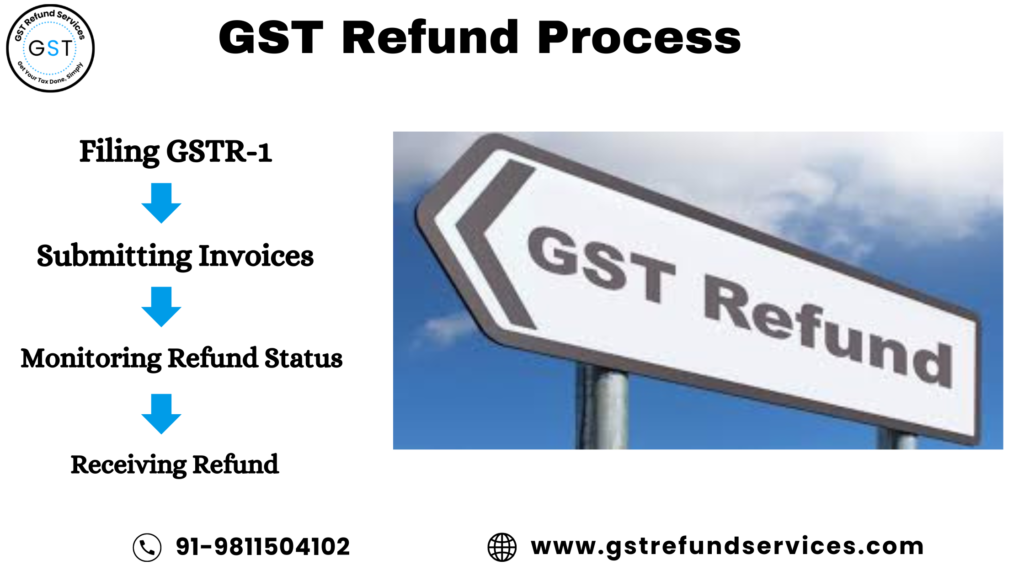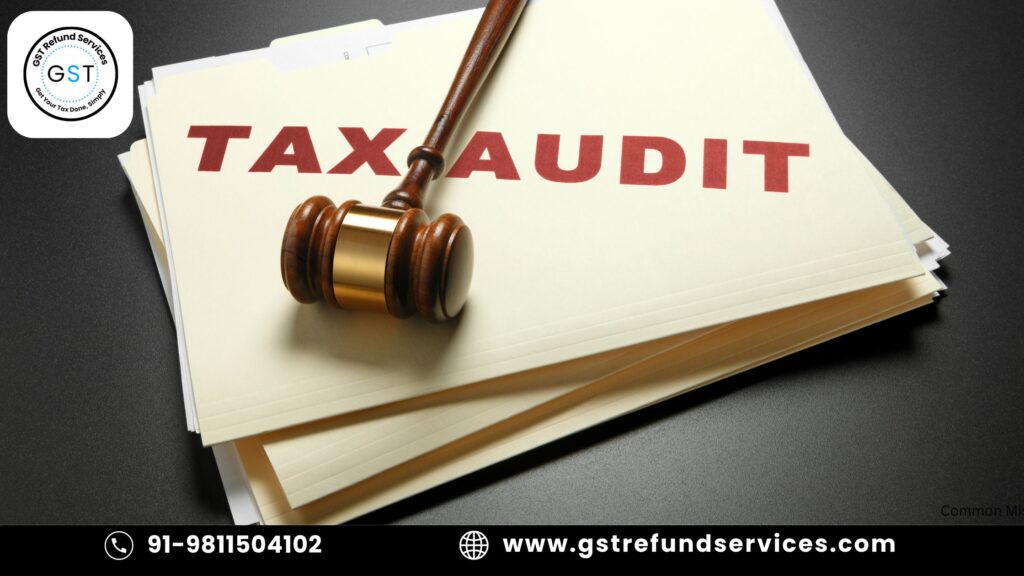
GST Refund Process, India’s economy depends heavily on exporters, and the Goods and Services Tax (GST) system provides them with special advantages including export tax rebates. But the procedure to get these reimbursements can be complicated. With the help of this guidance, exporters will be able to submit a hassle-free and effective GST refund claim in 2024 by following the step-by-step GST Refund Process instructions.
Exports are zero-rated supplies under the GST, which means they are GST-free. Refunds for taxes paid on inputs and services utilized in these exports are available to exporters. This blog provides exporters with a thorough road map for filing GST refund applications in 2024, reducing errors and denials.
Key Steps to Ensure a Smooth GST Refund Claim for Exporters through GST Refund Process
1. Select the Right Refund Method
Exporters can claim a GST refund in two ways:
- Export under Bond or Letter of Undertaking (LUT) without paying IGST.
- Export with payment of IGST, followed by a refund claim.
Bonus Tip: Choose the export under LUT method if you wish to avoid paying IGST upfront, preserving your cash flow. If quick refunds are your priority, opt for export with IGST payment.
2. Organize All Necessary Documents
Proper documentation is essential for a successful refund claim. Exporters should keep the following ready:
- Shipping bills
- Export invoices
- Bill of lading/airway bill
- Foreign Inward Remittance Certificate (FIRC) / Bank Realization Certificate (BRC)
- GSTR-1 and GSTR-3B GST return forms
Bonus Tip: Create a digital folder to store all the documents related to each export shipment. This helps streamline the filing process and reduces errors.
3. Timely Filing of GSTR-1 and GSTR-3B
Make sure your GSTR-3B (summary returns) and GSTR-1 (outward supplies) are correctly filed and submitted on time. To prevent discrepancies, it is imperative that the data in your shipping bills and the export invoices in GSTR-1 match.
Bonus Tip: Use software or a GST consultant to ensure no discrepancies between your returns and shipping data, reducing the chances of refund rejection.
4. Ensure Correct Export Invoice Declaration
When exporting goods or services, it’s critical that your invoices comply with GST regulations. Ensure they contain:
- Name and GSTIN of the exporter
- Taxable value and tax amount
- A clear mention of the export as “zero-rated supply”
Bonus Tip: To prevent issues later, double-check that the invoice information are correctly sent to the GST gateway if you’re utilizing an electronic invoicing system.
5. Monitor Refund Application Status
After filing your refund application, you can monitor the status via the GST portal. Keeping an eye on your refund progress helps address any issues promptly if they arise.
Bonus Tip: Regularly track your application using the Acknowledgment Reference Number (ARN) to avoid missing any updates or additional information requests from the authorities.
6. Quickly Respond to Queries from Authorities
If tax authorities raise any queries or ask for additional documents, it’s important to respond swiftly. Failure to do so may lead to delays or rejections of your claim.
Bonus Tip: Keep all communication organized by date and reference number so you can respond accurately and promptly.
7. Know the Refund Processing Timelines
Refunds must be processed within 60 days of the refund claim being submitted, according to the GST statute. On the other hand, administrative backlogs or mistakes in your application might occasionally cause delays.
Bonus Tip: If your refund is delayed beyond 60 days, follow up with the GST department, as you may be entitled to interest on delayed refunds.
8. Check and Update Bank Account Details
Make sure that your bank account details are correctly updated in the GST portal. Refunds are credited directly to the bank account linked with your GSTIN, so any mistakes here can result in further delays.
Bonus Tip: Double-check the bank account details in your GST profile before submitting the refund claim. Any outdated or incorrect information can lead to unnecessary hold-ups.
Exporters in 2024 can benefit immensely from the GST refund process if managed efficiently. Exporters can guarantee seamless refunds by selecting the appropriate procedure, keeping up-to-date records, and promptly interacting with tax authorities. Understanding the refund process and being proactive will go a long way in minimizing delays and securing your funds.
Here at GST Refund Services, we help companies with both GST compliance and refund claims, making sure that the return procedure goes smoothly. Need help? Contact us today for expert guidance on navigating the GST refund process for exporters.


